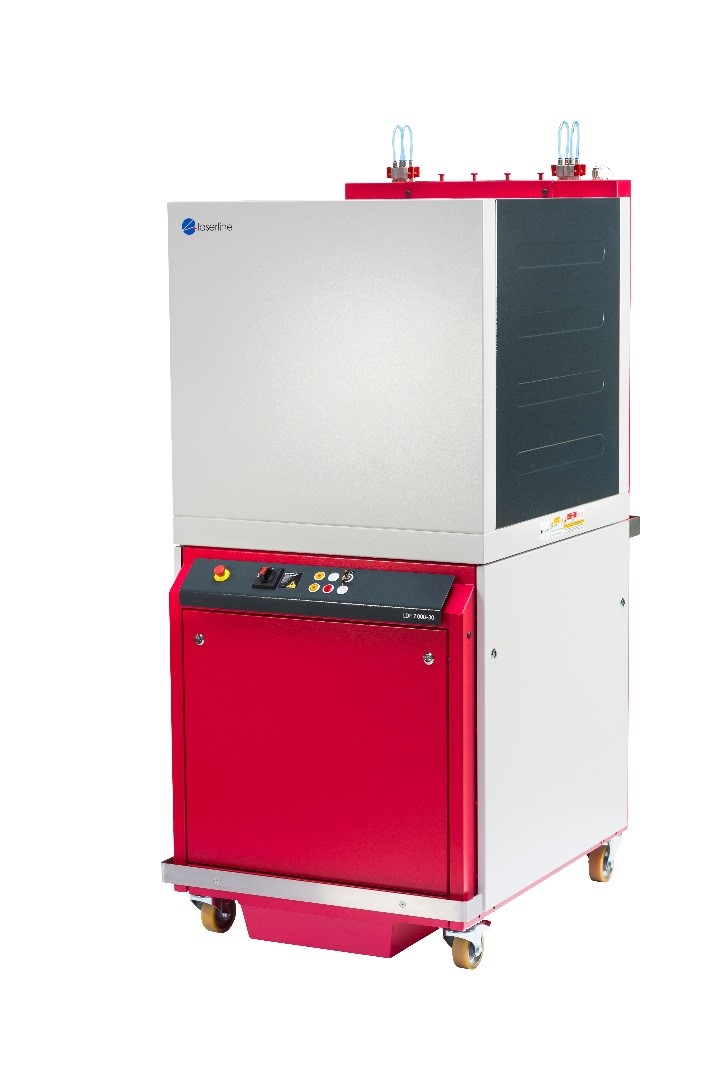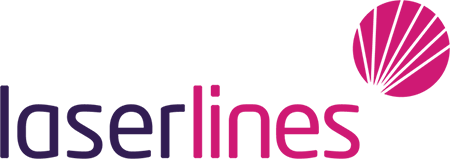LDF Diode Laser
Laserline LDF diode lasers set the standards for industrial applications in the multi-kilowatt laser range with regard to power, performance, mobility, efficiency and easy maintenance. They offer more power in less space than any other system in their class. LDF diode lasers are typically used for cladding, hardening, welding and brazing applications and are available with appropriate process heads and application specific accessories.

- World’s only mobile series laser with up to 45kW output power
- High electrical efficiency of up to 50%
- Modular: optional internal or external cooling system
- Laserline water/water or water/air cooling unit
- Field proven active diode cooling technology
- Internal networking of all system components
- Real time diagnosis for errors
- Remote operation via network access
- Reliable continuous operation (24/7) for in excess of 30,000 hours of operation
- 5 year warranty on laser diodes
These lasers are mounted on sturdy castors allowing a single employee to move them to different locations for start-up in production – a unique benefit. All you need is electricity and water, the laser is then ready to use at its’ new site. Thanks to continuous development of the active diode cooling technology the LDF series family is optimised to multi-kilowatt levels at high beam qualities. For example, a power of 7kW out of a 600µm fiber at 0.1NA in a compact system configuration with a footprint of less than 1 square metre is possible!
With an electrical efficiency of up to 50% LDF diode lasers have the highest efficiency of all laser sources. The functionality leaves nothing to be desired; thanks to the hot-pluggable control panel these lasers can be monitored and controlled with flexibility, from a distance. In the unlikely event of a failure, the two stage fault management system identifies causes – and guides the user directly to efficient troubleshooting where appropriate. Service areas and interfaces are easily accessible, and system components can be easily replaced, avoiding any slowdown to the production process.
An industrial, latest generation Ethernet network combines the system components with the central control unit, which monitors the entire process in real time. All information is available at any time; directly on the laser, in a factory control centre via the network connection, as well as remotely over a secure connection. Most industrial automation bus based communications systems are also supported.
| Optical specifications | |||||
| Max. output power | 7000 W | 9000 W | 15000 W | 20000 W | 25000 W |
| Beam quality | 30 mm.mrad | 40 mm.mrad | 60 mm.mrad | 100 mm.mrad | 200 mm.mrad |
| Other laser powers and process adapted beam qualities are available | |||||
| Fiber optic cables | 600µm (NA 0.1) | 400µm (NA 0.2) | 600µm (NA 0.2) | 1000µm (NA 0.2) | 2000µm (NA 0.2) |
| Min. focus at f=150mm | 450 µm | 600 µm | 900 µm | 1500 µm | 3000 µm |
| Fiber length | <150µs | <150µs | <150µs | <150µs | <150µs |
| Performance stability | < +/- 2% over 2 hours | ||||
| Wavelength range | 900 nm to 1070 nm | ||||
| Mechanical specifications | |||||
| VG62 | Weight ~ 600kg, dimensions: 1010mm x 680mm x 1245mm (L x W x H) | ||||
| VG64 | Weight ~ 750kg, dimensions: 1010mm x 680mm x 1600mm (L x W x H) | ||||
| VG66 | Weight ~ 800kg, dimensions: 1065mm x 850mm x 1845mm (L x W x H) | ||||
